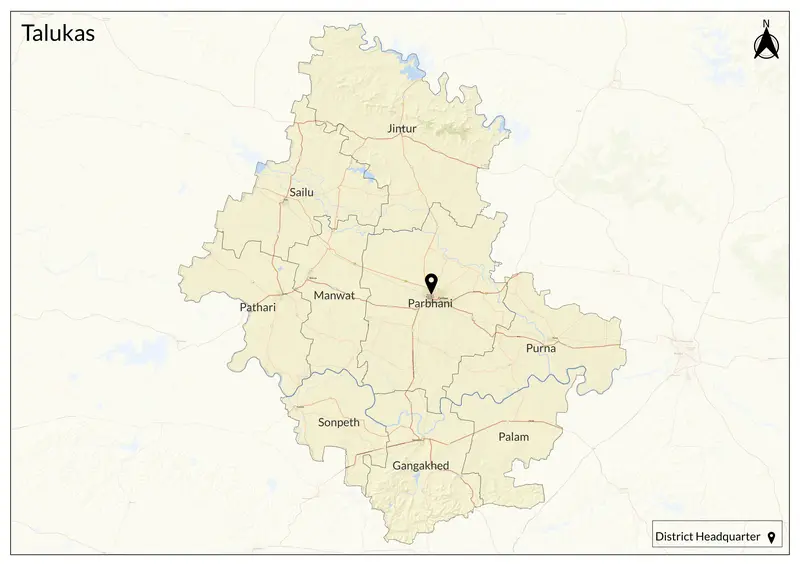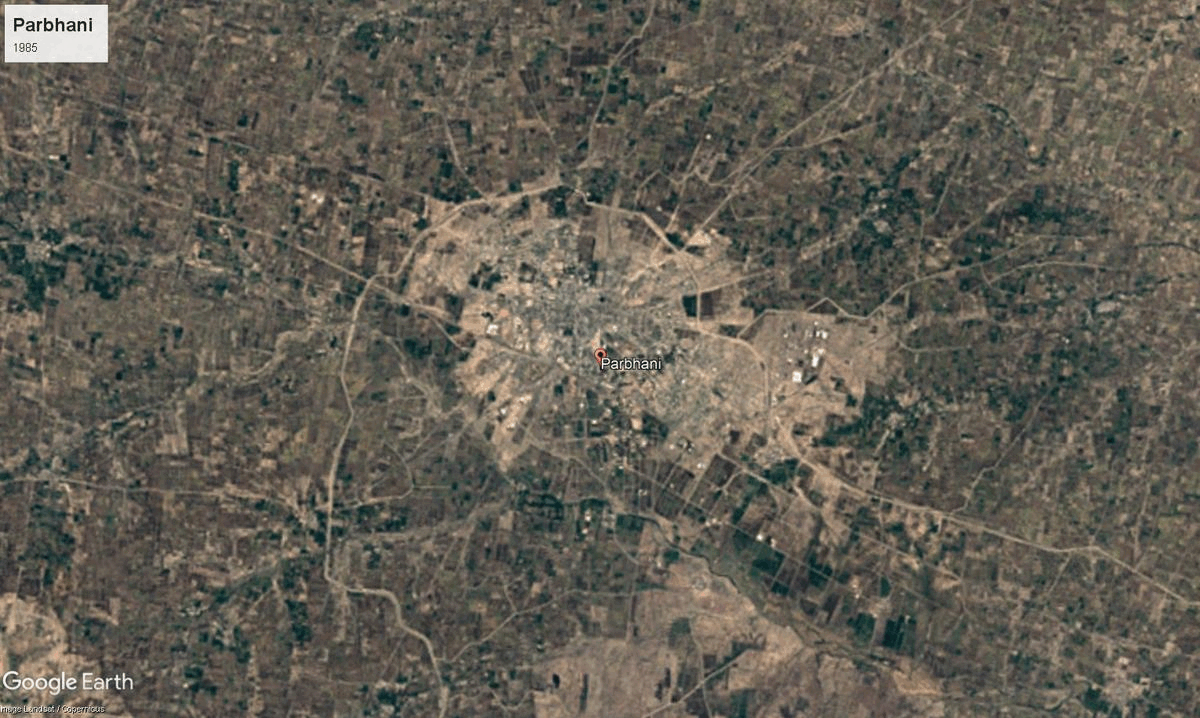Parbhani

6,517 sq. km
~19.79 lakh (2019)
940 (2011)
~ ₹19,991 crore (2019)
~ ₹1.01 lakh (2019)
Parbhani, located in the Marathwada region of Maharashtra, is believed to have derived its name from Prabhavati Nagar, named after a massive Mandir dedicated to Devi Prabhavati. Over time, the name gradually evolved into Parbhani. The district lies in the Godavari valley, with its geography influencing local agriculture and climate.
Historically, Parbhani was ruled by the Deccan Sultanates, Mughals, and later the Nizam of Hyderabad for around 650 years. It remained part of the Princely State of Hyderabad until 1948, when it was integrated into independent India. Until 1956, it was under Hyderabad State, after which it became part of Bombay State before joining Maharashtra in 1960. Parbhani comprises nine talukas: Parbhani, Gangakhed, Jintur, Pathri, Purna, Selu, Manwath, Sonpeth, and Palam. According to the 2011 Census, Marathi is the most widely spoken language, with Hindi, Urdu, and Marwari also spoken by various communities.
The district is home to several cultural and religious landmarks, such as the Nrusinh Mandir, an ancient Mandir dedicated to Bhagwaan Shiv, and the Hazrat Turabul Haq Dargah in Parbhani. The Pardeshwar Mandir, known for its marble Shivling, is another significant Mandir. Parbhani celebrates Ganesh Chaturthi, Eid, Makar Sankranti, and other regional festivals with great enthusiasm.
Geographically, Parbhani is characterized by fertile plains in the Godavari river valley, flanked by the Ajanta and Balaghat hills. The Godavari, along with tributaries like Purna and Dudhana, runs through the district, supporting a rich agricultural landscape. Landmarks include the historic city of Parbhani, the ancient Mudgaleshwar temple set mid-river, revered ghats, and spiritual centers dispersed across the region.
The Godavari River and its tributaries play a vital role in irrigation, supporting agriculture, which is the backbone of the district’s economy. Major crops include jowar, bajra, cotton (notably the Gaorani variety), and pulses. Agro-based industries such as cotton ginning, oil mills, and dal mills contribute to the local economy. The district also has a growing dairy and poultry farming sector. Small-scale industries in food processing, fertilizers, and agricultural machinery are present, mainly supported by Maharashtra Industrial Development Corporation (MIDC) industrial areas. Parbhani is also a center for agricultural research and education, with Vasantrao Naik Marathwada Krishi Vidyapeeth playing a crucial role in agricultural innovation and development. While large-scale industries are limited, efforts are ongoing to boost industrial growth and infrastructure development, strengthening the district’s economic future.
